Astrocyte Markers
Astrocytes are glial cells in the central nervous system (CNS). These star-shaped cells play a critical role in supporting and maintaining the functionality of neurons, the primary signaling cells responsible for transmitting information within the nervous system. Despite their previous classification as passive support cells, recent advancements in neuroscience have unveiled the multifaceted nature of astrocytes and their active participation in various essential processes.
These processes include providing structural support, facilitating nutrient and metabolic exchange, regulating ion homeostasis, modulating neurotransmitter levels, participating in synaptogenesis and synaptic modulation, promoting neuroprotection and repair, and contributing to the CNS's immune response. Consequently, astrocytes have emerged as central players in maintaining neural function and overall brain health.
Given their diverse functions, astrocyte dysfunction has been implicated in numerous neurological disorders such as Alzheimer's disease, multiple sclerosis, and traumatic brain injury. The ongoing investigation into the intricacies of astrocyte biology continues to enrich our understanding of their various roles in both healthy and pathological contexts, opening up new avenues for potential therapeutic interventions targeting neurological diseases.
Astrocyte Antibody Panel
Astrocyte Marker
GFAP (Glial Fibrillary Acidic Protein). GFAP is primarily expressed in mature astrocytes, provides structural support to these cells, and regulates their shape and function. GFAP is commonly used as a marker for astrocytes in research studies and is also used as a diagnostic tool in various neurological disorders, such as brain tumors, multiple sclerosis, and traumatic brain injury. Elevated levels of GFAP in the blood or cerebrospinal fluid (CSF) can indicate damage or injury to the CNS.
Tools to analyze GFAP
Antibody | Protein | cDNA Clone | Assay Kits
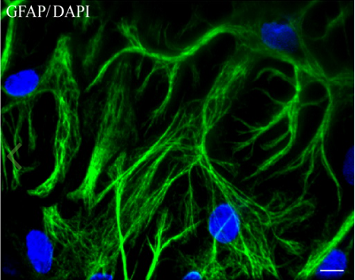
S100B is involved in various cellular processes, including regulating calcium homeostasis, cell proliferation, and differentiation. In the CNS, S100B is believed to play a role in modulating neuronal survival, synaptic plasticity, and neuronal development. Elevated levels of S100B in the blood or cerebrospinal fluid (CSF) have been associated with various neurological conditions, such as traumatic brain injury, stroke, and neurodegenerative diseases like Alzheimer's and Parkinson's. It is also used as a biomarker in clinical settings to help diagnose and monitor the progression of these disorders.
Tools to analyze S100B
Antibody | Protein | cDNA Clone | Assay Kits
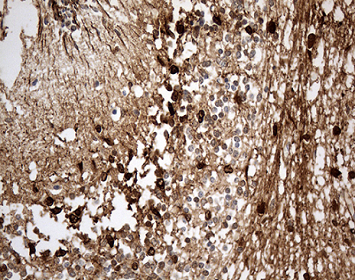
ALDH1L1 (Aldehyde Dehydrogenase 1 Family Member L1) regulates folate metabolism, essential for synthesizing DNA and other important cellular processes. Specifically, ALDH1L1 plays a key role in the synthesis of the amino acid glycine from serine, which is an important precursor for the synthesis of nucleotides and proteins. Mutations in the ALDH1L1 gene have been associated with various neurological disorders, including schizophrenia, bipolar disorder, and Alzheimer's disease. ALDH1L1 is also a biomarker for astrocyte activation, as its expression is upregulated in response to CNS injury or disease.
Tools to analyze ALDH1L1
Antibody | Protein | cDNA Clone | Assay Kits
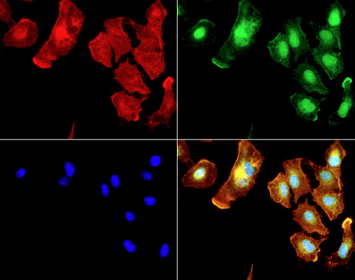
Glutamine synthetase (GS) is an enzyme found in various tissues in the body, including the brain. In the central nervous system (CNS), GS is primarily expressed in astrocytes, which plays an essential role in glutamate metabolism. Glutamate is an excitatory neurotransmitter that is released by neurons and taken up by astrocytes, where it is converted into glutamine by GS. Glutamine is then released by astrocytes and taken up by neurons, where it is converted back into glutamate, completing the glutamate-glutamine cycle. GS also detoxifies ammonia, a byproduct of amino acid metabolism, in the brain. Ammonia can be toxic to neurons and other cells in the brain, and GS plays a crucial role in preventing ammonia toxicity by converting it into glutamine, which can be safely transported out of the brain. Abnormalities in GS activity have been associated with various neurological disorders, including hepatic encephalopathy, Alzheimer's disease, and epilepsy. GS is also a biomarker for astrocyte activation and CNS injury or disease.
Tools to analyze Glutamine Synthetase
Antibody | Protein | cDNA Clone | Assay Kits
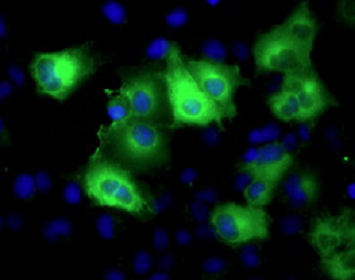
EAAT1 is also known as GLAST (Glutamate Aspartate Transporter). It is involved in regulating the levels of the excitatory neurotransmitter glutamate in the extracellular space of the CNS. Neurons release glutamate and can be toxic at high levels, so it is essential to regulate its concentration. EAAT1 takes up glutamate from the extracellular space and transports it into astrocytes, where it can be converted into glutamine by glutamine synthetase (GS) and transported back to neurons. EAAT1 is also involved in regulating synaptic plasticity, which is the ability of synapses to change their strength over time in response to neuronal activity. EAAT1-mediated uptake of glutamate from the synapse can help prevent excessive activation of postsynaptic receptors and maintain proper levels of synaptic activity. EAAT1 expression or function abnormalities have been implicated in various neurological disorders, including epilepsy, Alzheimer's disease, and multiple sclerosis.
Products for S100B
Antibody | Protein | cDNA Clone | Assay Kits
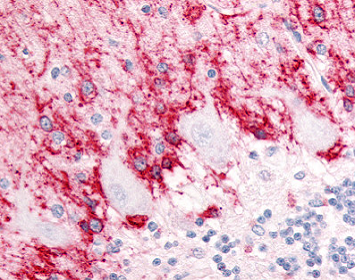
EAAT2 is also known as GLT-1 (Glutamate Transporter-1). EAAT2 regulates the excitatory neurotransmitter glutamate levels in the extracellular space of the CNS. EAAT2 is the most abundant glutamate transporter in the brain, and its dysfunction has been implicated in various neurological disorders, including amyotrophic lateral sclerosis (ALS), Alzheimer's disease, and epilepsy. Studies have shown that reduced EAAT2 expression or function can lead to increased glutamate levels in the extracellular space, which can result in excitotoxicity and neuronal damage. Therefore, EAAT2 has been identified as a potential therapeutic target for these disorders
Tools to analyze EAAT2
Antibody | Protein | cDNA Clone | Assay Kits
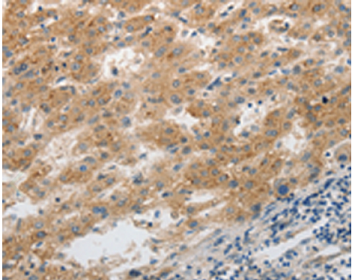
Astrocyte Functions
Astrocytes perform a wide range of functions in the CNS, including:
- Structural support: Astrocytes provide a scaffold that helps maintain the organization and structure of the brain and spinal cord.
- Nutrient and metabolic support: They help supply neurons with essential nutrients and play a role in maintaining the blood-brain barrier, which regulates the exchange of substances between the bloodstream and the CNS.
- Regulation of ion concentrations: Astrocytes help maintain the proper balance of ions, such as potassium, in the extracellular space around neurons, essential for maintaining normal neuronal function.
- Regulation of neurotransmitter levels: They can remove excess neurotransmitters from the synaptic cleft, preventing the overstimulation of neurons and contributing to the regulation of synaptic transmission.
- Synaptic modulation and formation: Astrocytes are involved in the formation, maintenance, and modulation of synapses, which are the connections between neurons that allow them to communicate with each other.
- Neuroprotection and repair: They protect neurons from injury and can help repair the nervous system following damage.
- Immune response: Astrocytes participate in the immune response within the CNS and can respond to and help clear infections and other pathogens.






























































































































































































































































 Germany
Germany
 Japan
Japan
 United Kingdom
United Kingdom
 China
China